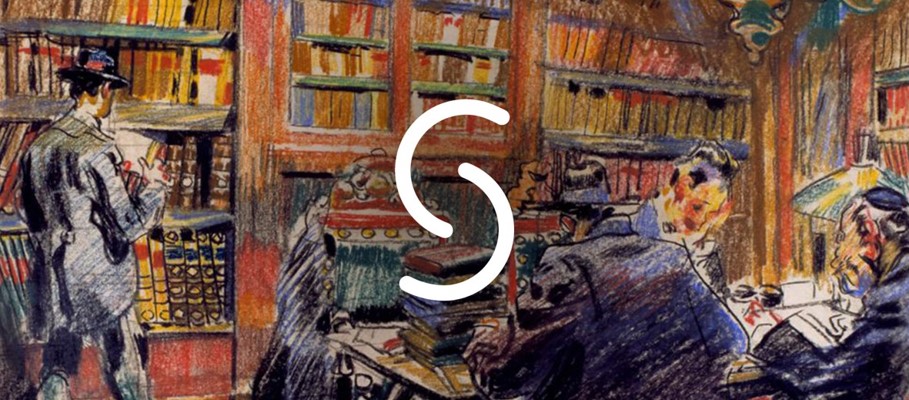-
Country
-
PT
-
Name of institution (English)
-
Municipal Library of Porto
-
Language of name of institution
-
por
-
Contact information: postal address
-
Rua de D. João IV 17, 4049-017 Porto
-
Contact information: phone number
-
00351 225193480
-
Contact information: email
-
bmp@cm-porto.pt
-
Reference number
-
Santa Cruz
-
Type of reference number
-
Archival reference number
-
Title (English)
-
Santa Cruz de Coimbra Library
-
Title (official language of the state)
-
Livraria de mão de Santa Cruz de Coimbra
-
Language of title
-
por
-
Creator / accumulator
-
Mosteiro de Santa Cruz de Coimbra
-
Date note
-
12th century/16th century
-
Language(s)
-
lat
-
heb
-
por
-
Extent
-
97 books
-
Type of material
-
Textual Material
-
Physical condition
-
Good
-
Scope and content
-
This collection is constituted by the so-called “Livraria de mão” (“handling library”) of the monastery of Santa Cruz of Coimbra, composed of the manuscript codices conserved in the monastery’s “armarium”. Among them, there is a Hebrew manuscript parchment containing a copy of Abraham Ibn Ezra’s Commentary on the Pentateuch (Santa Cruz 63). It is a 162-folio codex in Sephardic script whose provenance is not identified. Tiago Moita suggests that the manuscript would have been produced in Italy at the beginning of the 14th century. It had belonged to Manuel do Campo (his name appears written in Hebrew on the endsheet), a Portuguese Hebraist who lived in Rome, where he might have acquired the book. After he died in 1517, his library was delivered to his relatives in Portugal. Later, some of Campo’s books, including Ibn Ezra’s Commentary on the Pentateuch, were acquired by D. Frei Brás de Barros (1500-1559), a reformist of the Canons Regular of the Order of Saint Augustine, around 1528 (see Moita, 2017).
Another Jewish-related item in this collection is a copy of Dialogus contra judaeos (Santa Cruz 34), an anti-Jewish work composed by Pedro Afonso (1062-c. 1135), a Spanish Jewish converso who was the physician of King Afonso VI of Castille. Another copy of this manuscript is part of the Códices Alcobacenses collection of the Biblioteca Nacional de Portugal (ALC. 148).
-
Archival history
-
This collection was incorporated into the Biblioteca Pública do Porto after the dissolution of religious orders in Portugal in 1834. The Portuguese historian Alexandre Herculano was then a librarian in the Real Biblioteca Pública do Porto. He was responsible for receiving and listing the books from the monastery of Santa Cruz de Coimbra that arrived at the library on June 5, 1834. Then, the provenance of these books was signalised in the first folio, and they were numbered (these numbers correspond currently to the “cota geral”, general references). In 1879, the collection was again registered in the first fascicle of the “Indice preparatorio do catalogo dos manuscriptos, com repertorio alphabetico” (Preparatory index of the catalogue of manuscripts with an alphabetic index). A part of this collection was again catalogued in the second volume of the work “Inventário dos Códices iluminados até 1500”, published by the Biblioteca Nacional de Portugal in 1994. In that same year, the Biblioteca Pública Municipal do Porto, together with the Gabinete de Filosofia Medieval (Department of Medieval Philosophy) of the Faculdade de Letras da Universidade do Porto, started cataloguing and describing the codices of this collection, resulting in a book published in 1997 (Nascimento and Meirinhos, 1997).
-
Administrative / Biographical history
-
The Monastery of Santa Cruz de Coimbra was founded in 1131, almost at the same time King Afonso Henriques transferred the centre of the Portuguese court from Guimarães to Coimbra. Consequently, Santa Cruz de Coimbra, which followed the rule of Saint Augustine, also became the spiritual centre of the newly established kingdom of Portugal. The scriptorium of Santa Cruz dates back to the early times of the monastery. The constitution of a library was essential so the canons could meet their liturgical and preaching obligations. Until the mid-12th century, Santa Cruz, together with the Cathedral of Coimbra and the monastery of Lorvão, were the only book production centres in Portugal. However, after the end of the century, the copyist activity in Santa Cruz entered a downward phase following the growing influence of the newly created monastery of Alcobaça.
Also, in the mid-12th century, precisely between 1148 and 1150, the monastery’s hospital, the Hospital de S. Nicolau, was created, sheltering pilgrims, poor and sick people, and providing medical assistance by the canons.
In the 16th century, the monastery suffered a significant change when the order of Saint Augustine in Portugal became a congregation in 1556, and all Augustinian monasteries were under the same jurisdiction. In 1630, the congregation had 20 monasteries.
At the moment of the dissolution of religious orders in Portugal in 1834, the order of Saint Augustine was confined to only four monasteries: besides Santa Cruz, also S. Vicente de Fora in Lisbon, Mafra, and Serra do Pilar in Porto.
-
System of arrangement
-
The collection conserves the original numbering and arrangement that it had in the Monastery of Santa Cruz de Coimbra.
-
Access, restrictions
-
The access to the documents in poor condition of conservation could be limited for safeguarding and preserving the institution's documentary heritage.
-
Author of the description
-
Carla Vieira, 2021
